 W
WFranz Abromeit was an SS officer and worked in the Reich Security Main Office (RSHA). He was guilty of war crimes against Jews, but escaped from Germany at the end of World War II in Europe. In 1964 he was declared dead.
 W
WGeorg Bachmayer was an SS-Hauptsturmführer (captain) and member of the SS-Totenkopfverbände who served as the Schutzhaftlagerführer, with responsibility for prisoners while they were inside the Mauthausen concentration camp, he also oversaw granite production in the quarry. In this position he also inspected the satellite camps and supervised the construction of the Ebensee camp. He was considered a brutal sadist.
 W
WNikolaus "Klaus" Barbie was a German Nazi, known as the "Butcher of Lyon" for having personally tortured prisoners of the Gestapo—primarily Jews and members of the French Resistance—while stationed in Lyon under the collaborationist Vichy regime. After the war, United States intelligence services, which employed him for his anti-Marxist efforts, aided his escape to Bolivia, where he advised the regime on how to repress opposition through torture.
 W
WHeinz Baumkötter was an SS-Hauptsturmführer and concentration camp doctor in Mauthausen, Natzweiler-Struthof and Sachsenhausen, who conducted medical experiments on concentration camp inmates.
 W
WBruno Beger was a German racial anthropologist, ethnologist, and explorer who worked for the Ahnenerbe. In that role he participated in Ernst Schäfer's 1938–39 journey to Tibet, helped the Race and Settlement Office, or SS-Rasse- und Siedlungshauptamt, of the SS identify Jews, and later helped select human subjects to be killed to create an anatomical study collection of Jewish skeletons.
 W
WAlfred-Ingemar Berndt was a German journalist, writer and close collaborator of Nazi Propaganda Minister Joseph Goebbels. Berndt wrote an eyewitness account of the 1940 German invasion of the Low Countries and France, Tanks Break Through!, and is regarded as propagandistic creator of the "Desert Fox" myth attached to the German Field Marshal Erwin Rommel.
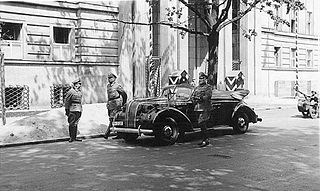 W
WWolfgang Birkner was a German SS functionary and a Holocaust perpetrator in World War II. Birkner served as the KdS Warschau in Warsaw following the German invasion of Poland in 1939.
 W
WWilhelm Friedrich Boger known as "The Tiger of Auschwitz" was a German police commissioner and concentration camp overseer. He was infamous for the appalling crimes which he had committed at Auschwitz under the command of the camp's Gestapo chief Maximilian Grabner.
 W
WOtto Albrecht Alfred von Bolschwing was a German SS-Hauptsturmführer in the Nazi Sicherheitsdienst (SD), Hitler's SS intelligence agency. After World War II von Bolschwing became a spy and worked for the Central Intelligence Agency (CIA) in Europe and later in California.
 W
WSS-Hauptsturmführer Hans Bothmann or Hans Johann Bothmann was the last commandant of the Chełmno extermination camp from 1942 on ; leader of the SS Special Detachment Bothmann conducting the extermination of Jews from the Łódź Ghetto and other places. He committed suicide in British custody in April 1946 while in Heide.
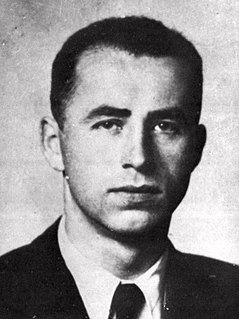 W
WAlois Brunner was an Austrian Schutzstaffel (SS) officer who worked as Adolf Eichmann's assistant. Brunner is held responsible for sending over 100,000 European Jews to ghettos and concentration camps in eastern Europe. He was commander of the Drancy internment camp outside Paris from June 1943 to August 1944, from which nearly 24,000 people were deported.
 W
WKarl Chmielewski was a German SS officer and concentration camp commandant. Such was his cruelty, he was dubbed Teufel von Gusen or the Devil of Gusen.
 W
WFriedrich Karl Hermann Entress was a German camp doctor in various concentration and extermination camps during the Second World War. He conducted human medical experimentation at Auschwitz and introduced the procedure there of injecting lethal doses of phenol directly into the hearts of prisoners. He was captured by the Allies in 1945, sentenced to death at the Mauthausen-Gusen camp trials, and executed in 1947.
 W
WSiegfried Wolfgang Fehmer was a German SS officer during World War II. He was stationed in Norway during the occupation by Nazi Germany, and by the end of the war he was heading the Oslo branch of the Gestapo from its headquarters in Victoria Terrasse, Oslo. Along with Josef Terboven, Fehmer was considered one of the most despised members of the German occupation forces in Norway.
 W
WKarl Fritzsch was a German member of the Nazi secret police Schutzstaffel from 1933-1945. He was a deputy- and an acting-commandant at the Auschwitz concentration camp. According to Rudolf Höss, Fritzsch first suggested using poisonous gas Zyklon B for the purpose of mass murder.
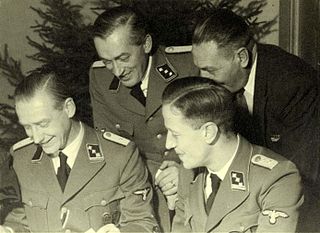 W
WFerdinand Hugo aus der Fünten, widely known as Fünten, was an SS-Hauptsturmführer and head of the Central Office for Jewish Emigration in Amsterdam during the Second World War. He was responsible for the deportation of Jews from the Netherlands to the German concentration camps and was convicted as a war criminal.
 W
WAmon Leopold Göth was an Austrian SS functionary and war criminal. He served as the commandant of the Kraków-Płaszów concentration camp in Płaszów in German-occupied Poland for most of the camp's existence during World War II.
 W
WHermann Hackmann was a German war criminal, Nazi SS captain in two extermination camps during World War II. He was a roll call officer at KL Buchenwald, and lead guard in charge of the so-called protective custody at Majdanek concentration camp in German-occupied Poland. Described as a brutal man with a cynical sense of humour, Hackmann was tried three times. The first time, he was prosecuted for murder and sentenced to death by SS Judge Georg Konrad Morgen in connection with the Koch trial. Hackmann escaped punishment and was evacuated by the Gestapo.
 W
WAribert Ferdinand Heim, also known as Dr. Death and Butcher of Mauthausen, was an Austrian Schutzstaffel (SS) doctor. During World War II, he served at the Mauthausen-Gusen concentration camp in Mauthausen, killing and torturing inmates using various methods, such as the direct injection of toxic compounds into the hearts of his victims.
 W
WMartin Karl Hellinger was a German Nazi dentist who in 1943 was assigned to work at the concentration camp for women at Ravensbrück, with the duty of removing dental gold from those killed at the camp.
 W
WGottlieb Hering was an SS commander of Nazi Germany. He served in Action T4 and later as the second and last commandant of Bełżec extermination camp during Operation Reinhard. Hering directly perpetrated the genocide of Jews and other peoples during The Holocaust.
 W
WAugust Hirt was an anatomist with Swiss and German nationality who served as a chairman at the Reich University in Strasbourg during World War II. He performed experiments with mustard gas on inmates at the Natzweiler-Struthof concentration camp and played a lead role in the murders of 86 people at Natzweiler-Struthof for the Jewish skeleton collection. The skeletons of his victims were meant to become specimens at the Institute of anatomy in Strasbourg, but completion of the project was stopped by the progress of the war. He was an SS-Hauptsturmführer (captain) and in 1944, an SS-Sturmbannführer (major).
 W
WWaldemar Hoven was a Nazi and a physician at Buchenwald concentration camp.
 W
WKarl Kahr was an Austrian SS-Hauptsturmführer and physician. During World War II, he was Chief Medical Officer of the Mittelbau-Dora concentration camp between January 1944 and February 1945.
 W
WRudolf Kerner was a German SS-Hauptsturmführer and crime commissioner. He was head of the German Security Police and Gestapo in Kristiansand, Norway from 1941. After the war he was sentenced to death but later pardoned.
 W
WFranz Konrad was an Austrian mid-level commander in the SS of Nazi Germany who was an administrative official responsible for the Werteerfassung or "recording of valuables" in the Warsaw Ghetto. He earned the nickname "the King of the Warsaw Ghetto". In March 1952 Konrad was executed by hanging in Warsaw.
 W
WJosef Kramer was the Commandant of Auschwitz-Birkenau and of the Bergen-Belsen concentration camp. Dubbed the Beast of Belsen by camp inmates, he was a German Nazi war criminal, directly responsible for the deaths of thousands of people. He was detained by the British Army after the Second World War, convicted of war crimes and hanged on the gallows in the prison at Hamelin by British executioner Albert Pierrepoint.
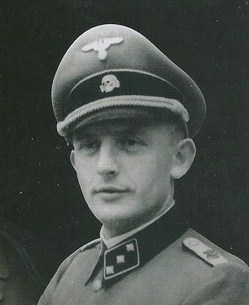 W
WKarl Wilhelm Krause was a Waffen-SS officer who rose to the rank of SS-Hauptsturmführer (captain) during World War II. He was a personal orderly (valet) and bodyguard to Adolf Hitler from 1934 to mid-September 1939. Thereafter, he served in the 12th SS Panzer Division Hitlerjugend. Krause came up with the concept of an anti-aircraft tank that became known as the Flakpanzer IV Wirbelwind. At the war's end he surrendered to American troops. Krause was interned until June 1946.
 W
WHans Krueger was a German captain of the Gestapo in occupied Poland during World War II, involved in organizing the string of massacres after the commencement of Operation Barbarossa behind the Curzon Line. His murderous rampage in the General Government territory against the ethnic Poles and the Polish Jews began with the massacre of Lviv professors in July 1941, which was followed by the Czarny Las massacre near Stanisławów in August 1941, as well as the notorious Bloody Sunday massacre of 10,000–12,000 Jews: men, women and children in October 1941, leading to the liquidation of the Stanisławów Ghetto a year later. Krueger was known as the right man for the job due to his Nazi fanaticism which earned him the seat of a city commandant in 1941 but also his brutality exhibited through hands-on participation in the killings.
 W
WWilli (Willy) Lehmann was a police official and Soviet agent in Nazi Germany.
 W
WJosef Mengele, also known as the Angel of Death, was a German Schutzstaffel (SS) officer and physician during World War II. He is mainly remembered for his actions at the Auschwitz concentration camp, where he performed deadly experiments on prisoners, and was a member of the team of doctors who selected victims to be killed in the gas chambers and was one of the doctors who administered the gas. With Red Army troops sweeping through German-occupied Poland, Mengele was transferred 280 kilometres (170 mi) from Auschwitz to the Gross-Rosen concentration camp on 17 January 1945, ten days before the arrival of the Soviet forces at Auschwitz.
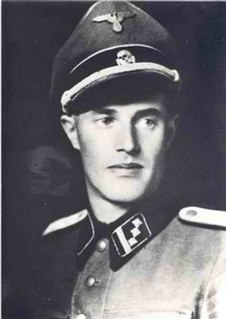 W
WFranz Novak was an Austrian SS-Hauptsturmführer. Novak was Adolf Eichmann's railroad and transportation timetable expert; he coordinated the railroad deportation of European Jews to concentration and extermination camps.
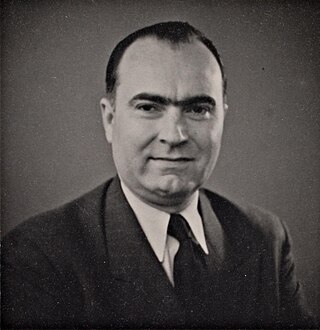 W
WHelmut Roland Heinrich Pfeiffer was a German lawyer and SS officer who rescued people hunted by the Nazi regime.
 W
WGeorg Preuß was a mid-ranking commander in the Waffen-SS of Nazi Germany during World War II. He was a convicted war criminal.
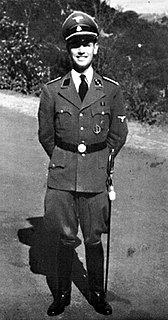 W
WErich Priebke was a German mid-level SS commander in the SS police force (SiPo) of Nazi Germany. In 1996, he was convicted of war crimes in Italy, for commanding the unit which was responsible for the Ardeatine massacre in Rome on 24 March 1944 in which 335 Italian civilians were killed in retaliation for a partisan attack that killed 33 men of the German SS Police Regiment Bozen. Priebke was one of the men held responsible for this mass execution. After the defeat of Nazi Germany, he fled to Argentina where he lived for almost 50 years.
 W
WFranz Karl Reichleitner was an Austrian member in the SS of Nazi Germany who participated in Operation Reinhard during the Holocaust. Reichleitner served as the second and last commandant of Sobibór extermination camp from 1 September 1942 until the camp's closure on or about 17 October 1943. As the commanding officer of the camp, Franz Reichleitner directly perpetrated the genocide of Jews.
 W
WTheodor Emil Saevecke was an SS officer and perpetrator of the Holocaust in Poland and the Holocaust in Italy.
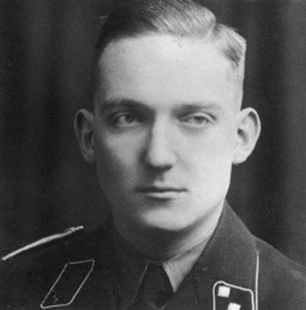 W
WHermann Schaper, was a German SS functionary during the Nazi era. He was a Holocaust perpetrator responsible for atrocities committed by the Einsatzgruppen in German-occupied Poland and the Soviet Union and was convicted after the war of numerous war crimes.
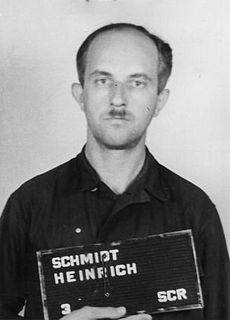 W
WErnst Heinrich Schmidt was a German physician and member of the SS, who practised Nazi medicine in a variety of German concentration camps during World War II. He was tried in 1947 and 1975 for complicity in war crimes, but was acquitted both times.
 W
WHeinrich Schwarz was an SS-Hauptsturmführer (captain) and concentration camp officer who served as commandant of Auschwitz III-Monowitz in Nazi-occupied Poland and Natzweiler-Struthof in Alsace-Lorraine.
 W
WSiegfried Seidl was an Austrian career officer and World War II Commandant of the Theresienstadt concentration camp located in the present-day Czech Republic. He also was commandant of the Bergen-Belsen, and later served as staff officer to Adolf Eichmann. After the war, in 1947, he was tried in Austria and convicted as a war criminal; sentenced to death, he was executed by hanging.
 W
WReinhard Nikolaus Karl Spitzy was an Austrian SS Hauptsturmführer, Nazi official and diplomat. He was a personal assistant to German Foreign Minister Joachim von Ribbentrop, through whom he met Adolf Hitler.
 W
WFranz Paul Stangl was an Austrian-born police officer and commandant of the Nazi extermination camps Sobibor and Treblinka. Stangl, an employee of the T-4 Euthanasia Program and an SS commander in Nazi Germany, became commandant of the camps during the Operation Reinhard phase of the Holocaust. He worked for Volkswagen do Brasil and was arrested in Brazil in 1967, extradited to West Germany and tried for the mass murder of 1 million people. In 1970, he was found guilty and sentenced to the maximum penalty, life imprisonment. He died of heart failure six months later.
 W
WHeinz Thilo was a German SS officer and a physician in the Nazi concentration camp Auschwitz.
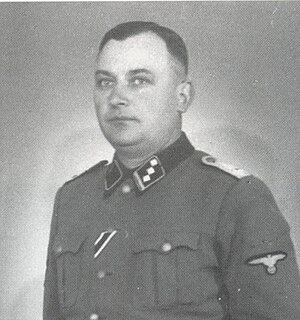 W
WRichard Thomalla pron. was a war criminal and SS commander of Nazi Germany. A civil engineer by profession, he was head of the SS Central Building Administration at Lublin reservation in occupied Poland. Thomalla was in charge of construction for the Operation Reinhard death camps Bełżec, Sobibor and Treblinka during the Holocaust in Poland.
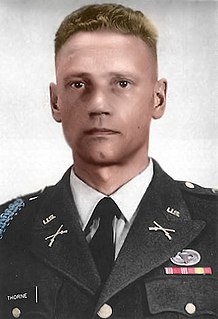 W
WLauri Allan Törni, later known as Larry Alan Thorne, was a Finnish-born American soldier who fought under three flags: as a Finnish Army officer in the Winter War and the Continuation War ultimately gaining a rank of captain; as a Waffen-SS captain of the Finnish Volunteer Battalion of the Waffen-SS when he fought the Red Army on the Eastern Front in World War II; and as a United States Army Major when he served in the U.S. Army Special Forces in the Vietnam War.
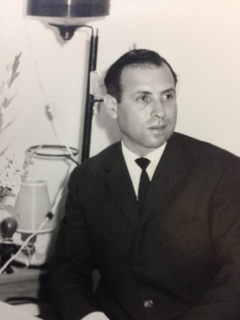 W
WErnst Josef Albert Weiner was a German SS-Hauptsturmführer during World War II. He was most noted for his role in Operation Blumenpflücken during the occupation of Norway by Nazi Germany.
 W
WDieter Wisliceny was a member of the Schutzstaffel (SS), and a key executioner in the final phase of the Holocaust.
 W
WMichael Wittmann was a German Waffen-SS tank commander during the Second World War. He is known for his ambush of elements of the British 7th Armoured Division during the Battle of Villers-Bocage on 13 June 1944. While in command of a Tiger I tank, Wittmann destroyed up to fourteen tanks and fifteen personnel carriers, along with two anti-tank guns, within the space of fifteen minutes. The news was picked up and disseminated by the Nazi propaganda machine and added to Wittmann's reputation in Germany.